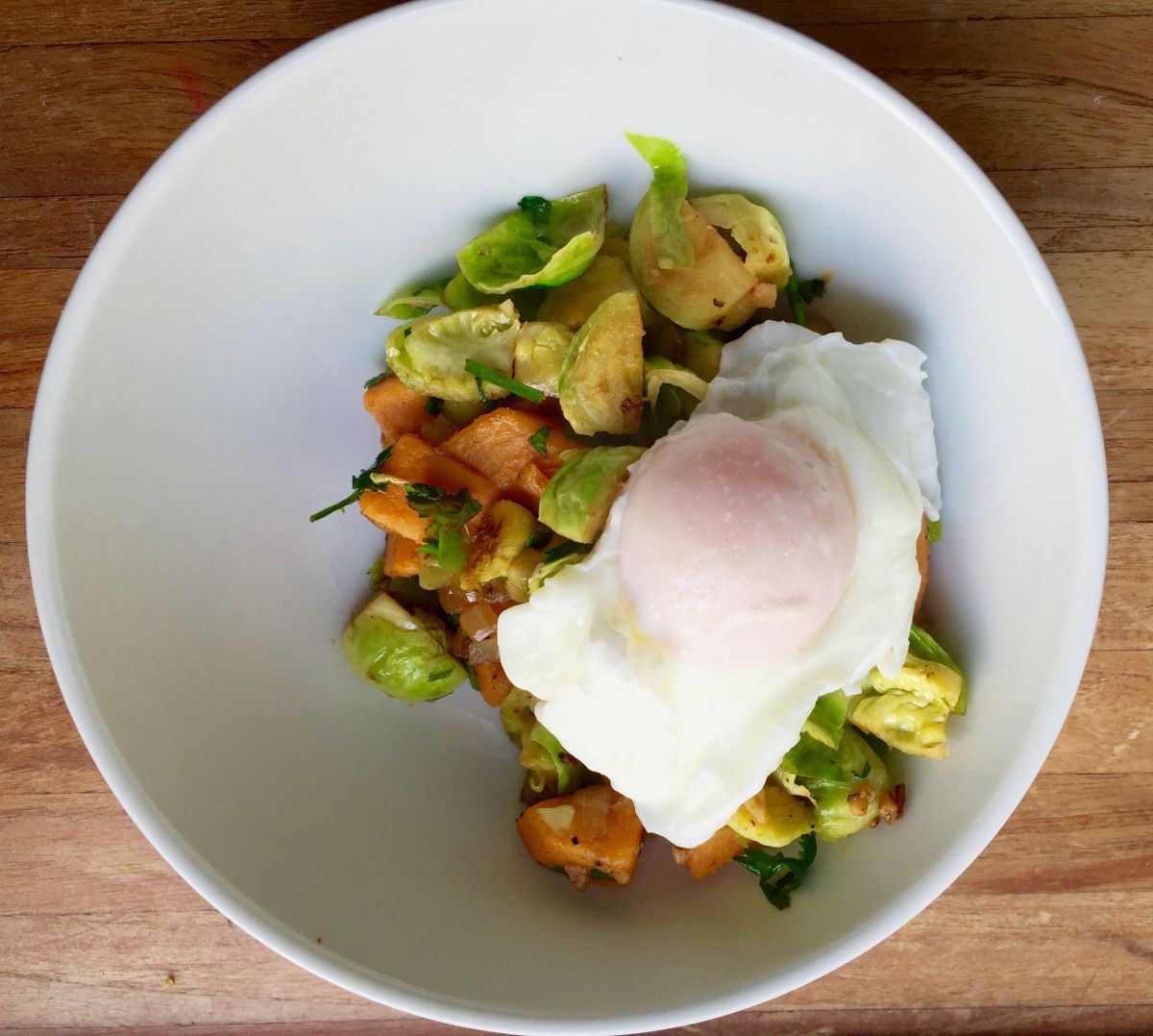Fuel your day the paleo way! This exploration delves into the vibrant world of high-protein paleo breakfasts, showcasing recipes that are as delicious as they are nutritious. Imagine waking up to the savory aroma of perfectly cooked bacon, the creamy texture of a vibrant green smoothie bursting with healthy fats, or the satisfying crunch of a nut and seed bowl brimming with protein. We’ll uncover a treasure trove of egg dishes, meat and fish options, and smoothie combinations, all designed to kickstart your metabolism and keep you feeling energized throughout your day. Prepare to discover breakfast recipes that not only taste amazing but also nourish your body with the essential nutrients it craves.
From quick and easy weekday options to more elaborate weekend creations, this guide caters to every preference and skill level. We’ll examine the nutritional benefits of each ingredient, highlighting the protein powerhouses and essential fats that contribute to sustained energy and overall well-being. Get ready to transform your morning routine with these innovative and satisfying paleo breakfast ideas.
High-Protein Paleo Breakfast Egg Dishes
Paleo breakfasts often emphasize whole, unprocessed foods, and eggs are a fantastic source of high-quality protein to kickstart your day. Their versatility allows for countless delicious and nutritious combinations, perfectly fitting the paleo lifestyle. This section explores three high-protein paleo breakfast egg recipes, highlighting their nutritional benefits and demonstrating ideal cooking techniques.
High-Protein Paleo Egg Dish Recipes
| Name | Ingredients | Instructions | Nutritional Information (per serving – approximate) |
|---|---|---|---|
| Spinach and Feta Paleo Scrambled Eggs | 2 large eggs, 1 cup spinach (chopped), 1 tablespoon crumbled feta cheese, 1 teaspoon olive oil, salt and pepper to taste | Sauté spinach in olive oil until wilted. Whisk eggs with salt and pepper. Add spinach and feta to the eggs. Cook over medium heat, stirring frequently, until eggs are set but still slightly moist. | Protein: 15g, Fat: 12g, Carbs: 2g |
| Bacon and Avocado Egg Cups | 4 large eggs, 2 slices bacon (cooked and crumbled), ½ avocado (diced), 1 tablespoon coconut oil, salt and pepper to taste | Preheat oven to 350°F (175°C). Grease a muffin tin with coconut oil. Whisk eggs with salt and pepper. Divide bacon and avocado among the muffin cups. Pour egg mixture over the bacon and avocado. Bake for 15-20 minutes, or until eggs are set. | Protein: 20g, Fat: 20g, Carbs: 3g |
| Mushroom and Sausage Egg Frittata | 6 large eggs, 1 cup sliced mushrooms, ½ cup paleo sausage (cooked and crumbled), 1 tablespoon olive oil, ½ onion (chopped), salt and pepper to taste | Sauté onion and mushrooms in olive oil until softened. Whisk eggs with salt and pepper. Combine egg mixture with sautéed vegetables and sausage. Pour into an oven-safe skillet. Bake at 350°F (175°C) for 20-25 minutes, or until frittata is set. | Protein: 30g, Fat: 25g, Carbs: 5g |
Ideal Paleo Scrambled Eggs
Imagine a plate holding perfectly scrambled eggs. They are a pale, sunny yellow, punctuated by flecks of creamy white where the proteins have gently coagulated. The texture is light and fluffy, not dry or rubbery. Each bite offers a subtle moistness, a testament to careful cooking. This visual perfection is achieved by cooking the eggs over low heat, stirring frequently with a spatula, and removing them from the heat while they are still slightly wet. This prevents overcooking and ensures a tender, flavorful result. The gentle heat allows the egg whites and yolks to blend seamlessly, creating a cohesive, yet airy texture.
Nutritional Benefits of Eggs in a Paleo Diet
Eggs are a nutritional powerhouse, particularly beneficial within a paleo framework. They provide a complete protein source, meaning they contain all nine essential amino acids our bodies cannot produce on their own. This is crucial for muscle growth, repair, and overall bodily function. Beyond protein, eggs are rich in choline, a nutrient vital for brain health and liver function. They also offer essential fatty acids, vitamins (like A, D, and B12), and minerals (like selenium and iodine), all contributing to a balanced and healthy paleo diet. The high protein content in eggs promotes satiety, helping manage appetite and prevent overeating, a key factor in maintaining a healthy weight.
High-Protein Paleo Breakfast with Nuts & Seeds
Paleo breakfasts don’t have to be monotonous. Nuts and seeds offer a fantastic way to boost the protein and healthy fat content of your morning meal, adding satisfying texture and a range of delicious flavors. They are also incredibly versatile, easily incorporated into various breakfast bowls for a quick and nutritious start to the day.
High-Protein Paleo Breakfast Bowl Recipes
The following recipes demonstrate the versatility of nuts and seeds in creating satisfying and nutritious paleo breakfasts. Each bowl provides a unique flavor profile and a significant protein boost.
- Berry Almond Power Bowl:
- Ingredients: 1/2 cup mixed berries (strawberries, blueberries, raspberries), 1/4 cup sliced almonds, 2 tablespoons chia seeds, 1 scoop vanilla protein powder (paleo-friendly), 1/4 cup unsweetened almond milk.
- Instructions: Combine all ingredients in a bowl. Mix well and enjoy immediately. The vibrant red and deep blue of the berries contrast beautifully with the creamy white of the almond milk and the light brown of the almonds and chia seeds. The texture is a delightful mix of soft berries, crunchy almonds, and slightly gelatinous chia seeds.
- Pumpkin Seed and Coconut Breakfast Bowl:
- Ingredients: 1/4 cup pumpkin seeds, 1/4 cup shredded unsweetened coconut, 1/2 cup cooked sweet potato, 1/4 avocado, 1 tablespoon coconut oil, pinch of cinnamon.
- Instructions: Roast pumpkin seeds in coconut oil until lightly browned. Mash the sweet potato. Combine all ingredients in a bowl. The warm tones of the sweet potato, the vibrant green of the avocado, and the speckled green of the pumpkin seeds create a visually appealing and appetizing bowl. The textures range from the soft sweet potato to the crunchy pumpkin seeds and the creamy avocado.
- Tropical Macadamia and Hemp Seed Bowl:
- Ingredients: 1/4 cup macadamia nuts, 2 tablespoons hemp seeds, 1/2 cup mango chunks, 1/4 cup shredded coconut, 1/4 cup coconut yogurt (paleo-friendly).
- Instructions: Roughly chop macadamia nuts. Combine all ingredients in a bowl. The bright yellow-orange of the mango contrasts beautifully with the creamy white of the coconut and yogurt, while the brown macadamia nuts and hemp seeds add textural interest. The combination creates a tropical paradise in a bowl.
Nutritional Value of Nuts and Seeds in Paleo Breakfasts
Nuts and seeds are nutritional powerhouses, offering a wealth of benefits for a paleo diet. They are rich sources of protein, healthy fats, fiber, and various vitamins and minerals. The specific nutritional profile varies depending on the type of nut or seed. These nutrients contribute to sustained energy, satiety, and overall health.
Nutritional Comparison: Almonds, Chia Seeds, and Pumpkin Seeds
Almonds, chia seeds, and pumpkin seeds each offer unique nutritional benefits, making them excellent additions to a high-protein paleo breakfast.
| Nutrient | Almonds (1 ounce) | Chia Seeds (1 ounce) | Pumpkin Seeds (1 ounce) |
|---|---|---|---|
| Protein (grams) | 6 | 4 | 5 |
| Fat (grams) | 14 | 9 | 13 |
| Fiber (grams) | 3.5 | 10 | 1.7 |
Note: These values are approximate and may vary slightly depending on the source. This table highlights the differences in macronutrient profiles. Almonds are higher in fat, while chia seeds excel in fiber content. Pumpkin seeds offer a balance of protein and fat. All three are valuable additions to a paleo breakfast for their unique contributions to overall nutrition.
High-Protein Paleo Breakfast Leftovers

Transforming last night’s delicious Paleo dinner into a quick and satisfying breakfast is easier than you think! Repurposing leftovers minimizes food waste and provides a convenient, high-protein start to your day. This strategy also saves valuable time in the morning, allowing you to focus on other important tasks.
Repurposing Paleo Dinner Leftovers for Breakfast
The following examples showcase how versatile your Paleo dinners can be. Imagine the time saved and the deliciousness enjoyed!
- Leftover Roasted Chicken and Vegetables: Imagine succulent roasted chicken breast, still juicy from the previous night’s meal, paired with vibrant roasted vegetables like broccoli, Brussels sprouts, and sweet potatoes. This combination provides a substantial amount of protein and healthy fats.
- Step 1: Remove the chicken and vegetables from the refrigerator and allow them to come to room temperature slightly.
- Step 2: If the vegetables are slightly dry, add a tablespoon or two of bone broth or water to a pan and warm them gently until heated through. Alternatively, you can simply warm the chicken and vegetables in a microwave-safe dish.
- Step 3: Enjoy your warm and satisfying breakfast. The flavors will have deepened overnight, creating an even more delicious experience.
- Leftover Salmon with Asparagus: Picture flaky salmon, still moist and flavorful, paired with tender-crisp asparagus spears. This breakfast option is rich in omega-3 fatty acids and protein, fueling your body and mind.
- Step 1: Gently reheat the salmon and asparagus in a pan over low heat, adding a splash of lemon juice for extra brightness. Alternatively, microwave the leftovers in a microwave-safe dish until warmed through.
- Step 2: If desired, add a sprinkle of fresh herbs like dill or parsley for a burst of freshness.
- Step 3: Enjoy the healthy fats and protein from this delicious breakfast.
- Leftover Steak and Salad: Imagine leftover grilled steak, still tender and flavorful, combined with a vibrant salad of mixed greens, avocado, and a simple vinaigrette. This breakfast provides a substantial protein boost and a refreshing, satisfying start to the day.
- Step 1: Slice the steak into smaller, bite-sized pieces for easier consumption.
- Step 2: Toss the salad greens with the vinaigrette and arrange them on a plate. Top with the steak slices.
- Step 3: Enjoy the combination of protein and fresh vegetables for a balanced and satisfying breakfast.
Storing and Reheating Paleo Leftovers
Proper storage and reheating are crucial for preserving the nutritional value and flavor of your Paleo leftovers.
- Allow food to cool completely before storing it in airtight containers in the refrigerator. This prevents the growth of harmful bacteria and helps maintain freshness.
- Use glass or BPA-free plastic containers to avoid leaching chemicals into your food.
- Reheat leftovers gently, avoiding high heat that can destroy nutrients and compromise the texture. Microwave ovens, low-heat stovetop methods, or even a gentle warming in a low-temperature oven are all viable options.
- Consume leftovers within 3-4 days for optimal freshness and safety.
Benefits of Meal Prepping Paleo Dinners for Breakfast
Meal prepping Paleo dinners significantly simplifies the process of creating high-protein breakfasts throughout the week. It allows for efficient use of time, reducing morning stress and ensuring a consistent supply of healthy and delicious meals. This approach minimizes the need for last-minute breakfast decisions, promoting healthier eating habits and improved dietary consistency.
Embarking on a high-protein paleo breakfast journey opens a world of culinary possibilities, empowering you to create delicious and nutritious meals that fuel your body and mind. Whether you’re a seasoned paleo enthusiast or just starting out, the recipes and insights provided offer a comprehensive guide to crafting breakfasts that are both satisfying and supportive of your health goals. From the rich flavors of perfectly cooked eggs to the vibrant textures of nutrient-packed smoothies, these recipes are designed to inspire and delight, transforming your morning routine into a nourishing and enjoyable experience. So, dive in and discover the transformative power of a high-protein paleo breakfast!
Essential Questionnaire
What are the best ways to store leftover paleo breakfast ingredients?
Store cooked meats and vegetables in airtight containers in the refrigerator for up to 3-4 days. Nuts and seeds should be kept in an airtight container in a cool, dark place to maintain freshness and prevent rancidity.
Can I adjust the protein levels in these recipes?
Absolutely! You can easily adjust protein levels by adding more eggs, meat, fish, nuts, or seeds to your chosen recipe. Consider the serving size and your individual protein needs when making adjustments.
Are all fruits allowed in paleo smoothies?
While most fruits are acceptable in moderation on a paleo diet, focus on lower-sugar options like berries. Limit higher-sugar fruits like bananas to smaller portions.
What if I don’t have all the ingredients listed in a recipe?
Feel free to substitute ingredients with similar paleo-friendly options. For example, if you don’t have almonds, you could use walnuts or pecans.


